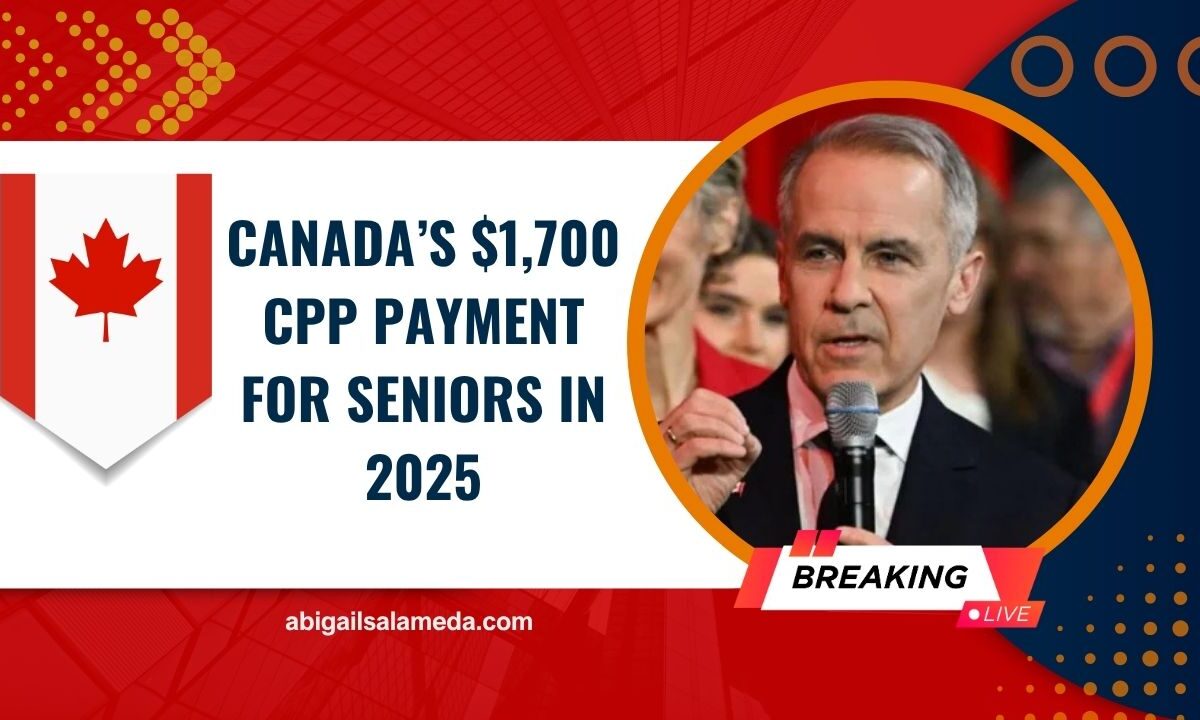In 2025, Canada’s Canada Pension Plan (CPP) remains a vital source of income for seniors. With the maximum monthly payment at $1,433 and average payouts around $900, couples or those delaying benefits can stretch incomes close to $1,700.
This article explores eligibility, how to claim your CPP, payment dates, and how to maximize your benefit.
What Is CPP and the $1,700 Connection?
CPP is a taxable monthly retirement benefit based on your contributions and age at claim. As of January 2025, the maximum CPP at age 65 is $1,433/month.
While the headline isn’t a literal $1,700, smart strategies—like waiting past 65 or spousal income splitting—can elevate a retiree or couple’s combined income to around that level.
2025 Payment Dates
Payments are released near the end of each month. The 2025 CPP payment dates are:
| Month | Payment Date |
|---|---|
| January | 29 |
| February | 26 |
| March | 27 |
| April | 28 |
| May | 28 |
| June | 26 |
| July | 29 |
| August | 27 |
| September | 25 |
| October | 29 |
| November | 26 |
| December | 22 |
The next upcoming senior payment is July 29, 2025, alongside OAS.
Eligibility Criteria
To qualify for CPP retirement pension:
- Be at least 60 years old
- Have made at least one valid CPP contribution
Maximum benefit requires contributions for at least 39 years, including income adjustments like low-earning child-rearing periods.
How to Claim Your CPP
- Apply online via your My Service Canada Account (MSCA)—typically processed within 7–14 business days.
- Or file a paper application—may take up to 120 days .
- Choose your start date (between ages 60–70), which affects payment size.
How Much Will You Get?
Payout depends on:
- When you start: from 60 with a 36% reduction, or up to 42% increase if deferred to 70.
- Lifetime earnings contributions—up to the 2025 maximum pensionable earnings of $71,300.
- Years of contributions—longer = higher pension; 39 years yields full amount Canada.ca.
Example figures:
- Maximum at 65: $1,433/month .
- Average at 65: $899.67 (October 2024 average).
- After deferral to 70: up to $42% higher, which can push monthly income near or above $2,000. Most seniors aiming for ~$1,700 monthly combine strategies like spousal splitting or wait.
Key CPP Features
- Post-Retirement Contributions: If working between 65–70, you can increase CPP via optional contributions.
- Spousal Income Splitting: Available to reduce taxes and maximize household income .
- Inflation Indexing: CPP is indexed annually (January) to CPI.
- Taxation: Fully taxable at your marginal tax rate; you may request tax withholding at source.
CPP vs OAS
- CPP: Based on contributions, starts earliest at 60.
- OAS: For 65+, residency-based, income-tested, funded by general revenues .
CPP At-a-Glance
| Detail | 2025 Info |
|---|---|
| Eligibility | 60 years+, ≥1 CPP contribution |
| Max monthly at 65 | $1,433 |
| Avg monthly at 65 | ~$900 |
| Payment dates | 29 Jan, 26 Feb … 29 Jul … 22 Dec |
| Deferral 65→70 | Increase of up to 42 % |
| YMPE: max pensionable earnings | $71,300 |
| Contribution rate (employee) | 5.95 % on earnings between exemption and YMPE |
| Self-employed rate | 11.9 % |
| Post-retirement cont. | 65–70, optional, can boost your pension |
| Income-tested? | No (CPP); Yes (OAS for higher income earners) |
| Tax status | Fully taxable |
In 2025, CPP remains a cornerstone of retirement income. With a maximum of $1,433/month at age 65, strategic planning—like deferring, contributing post‑65, and income splitting—can help seniors achieve a total monthly income around $1,700.
Understanding eligibility, payments, and claiming methods is crucial to unlock the fullest value from CPP.
FAQs
Can I claim CPP before age 65?
Yes—starting at 60, but the amount is permanently reduced by 0.6% per month (up to ~36%).
How do I get near $1,700 per month?
Combine max CPP ($1,433) with income splitting, deferral, spouse’s partial pension, or additional voluntary contributions.
When is the next CPP payment?
The upcoming payment date is July 29, 2025.




